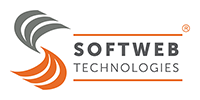Manufacturing
Agro Plantation
Mining
Retail
Logistics
Healthcare
Education
Travel & Hospitality
Smart Farming
Smart farming, also known as precision agriculture, is the application of advanced technologies such as the Internet of Things (IoT), Artificial Intelligence (AI), robotics, and data analytics to improve and optimize farming processes. The goal of smart farming is to make agriculture more efficient, sustainable, and data-driven, enabling farmers to manage their resources more effectively.
By utilizing sensors, drones, and satellite imagery, smart farming provides real-time data on soil conditions, crop health, weather patterns, and livestock behavior. This data allows farmers to make informed decisions, such as adjusting irrigation schedules, applying fertilizers more accurately, and detecting diseases early. Automation in smart farming, through robotics and AI-driven systems, also helps streamline labor-intensive tasks like planting, harvesting, and monitoring livestock.
The integration of these technologies reduces resource waste, such as water and pesticides, and increases productivity, leading to higher crop yields and improved quality. Moreover, smart farming contributes to environmental sustainability by minimizing the ecological footprint of farming activities.

Smart Farming & Precision Agriculture: Use Cases
Soil Testing
Soil quality is key to crop health and yield. Smart farming uses sensors to gather data on NPKS levels (Nitrogen, Phosphorus, Potassium, Sulphur), pH, and moisture content, providing farmers with detailed insights to optimize fertilizer and water usage. Satellite imagery and drones enable remote soil quality assessments without manual sampling.
Pest and Disease Monitoring
Controlling pests and diseases is critical for protecting crop yields. Precision agriculture employs computer vision and sensors to detect early signs of pests or diseases. This allows farmers to apply targeted interventions, reducing pesticide use and minimizing environmental impact.
Meteorological Data & Irrigation Management
Smart farming integrates weather stations for real-time data on rainfall, temperature, and humidity, helping farmers optimize irrigation schedules. Sensor-based irrigation systems adjust water levels in real-time, promoting efficient water use and healthy crop growth.
Crop Monitoring and Cultivation Tracking
GIS-based tools and mobile apps enable farmers to track the entire cultivation process, from planting to harvest. Satellite images and drone-based spraying help monitor crop health and apply fertilizers or pesticides precisely where needed, improving productivity and sustainability.

Smart Farming Technologies: Revolutionizing Agriculture with Precision and Sustainability

Sensors: Soil Quality and Water Levels
Soil sensors are vital to precision agriculture, collecting real-time data on moisture levels, temperature, and nutrient content. This data enables farmers to fine-tune irrigation and fertilization, ensuring crops receive the exact amount of nutrients and water needed for optimal growth. Similarly, water sensors in irrigation systems monitor water levels and automate schedules based on soil moisture data, reducing water waste, preventing overwatering, and cutting costs.
Computer Vision: Disease and Pest Detection
Using computer vision and image processing, early signs of plant diseases and pest infestations are identified through cameras or drone-captured images. These are analyzed by algorithms to detect any abnormalities. Quick detection allows farmers to act promptly, safeguarding crops and minimizing yield losses.
Drone : Spraying and Satellite Image Analysis
Drones have revolutionized spraying by allowing pesticides to be applied precisely where needed, reducing overuse and limiting environmental contamination. Meanwhile, satellite image processing provides detailed insights into crop conditions, growth rates, and overall health, helping farmers make informed decisions on fertilization, irrigation, and pest control for improved productivity.
Data Analytics and Dashboards : Real-Time Insights
Advanced data analytics process vast amounts of sensor, weather, and satellite data, delivering actionable insights through user-friendly dashboards. Farmers can track field activities, monitor soil health, and predict crop yields. This data-driven approach enhances decision-making and promotes sustainable practices.
By comparing real-time data with historical trends, farmers can foresee potential issues like water shortages, pest outbreaks, or nutrient imbalances, and take preventive actions. Customizable dashboards allow them to monitor key performance indicators (KPIs) and measure the impact of changes.
Robotics : Field Activity
Robotics plays a crucial role in smart farming by deploying autonomous machines that carry out tasks such as planting, weeding, and harvesting with high precision. These machines help reduce labor costs, enhance efficiency, and ensure optimal crop management, improving both productivity and sustainability in agricultural operations.
Artificial Intelligence (AI)
AI enhances precision agriculture by analyzing vast amounts of data from sensors, weather stations, and satellite images. It predicts weather patterns, pest infestations, and crop diseases, enabling farmers to take proactive measures. This helps optimize resource use, improve crop health, and boost overall farm productivity and sustainability.


